Types Of Sticker Weeds
There are many types of sticker weeds that can be found in gardens and yards. The most common type is the Grass Stickers, Spiny Stickers, Lawn Burs and Field Sandburs Sticker. Sticker weeds can be difficult to control, but there are a few things that you can do to help prevent them from taking over your garden.
Pulling them by hand is the best way to remove them, but you can also use a hoe or tiller to loosen the soil and make it easier to pull them out. You can also use herbicides to kill sticker weeds, but be sure to follow the directions on the label carefully so that you don’t damage your plants.
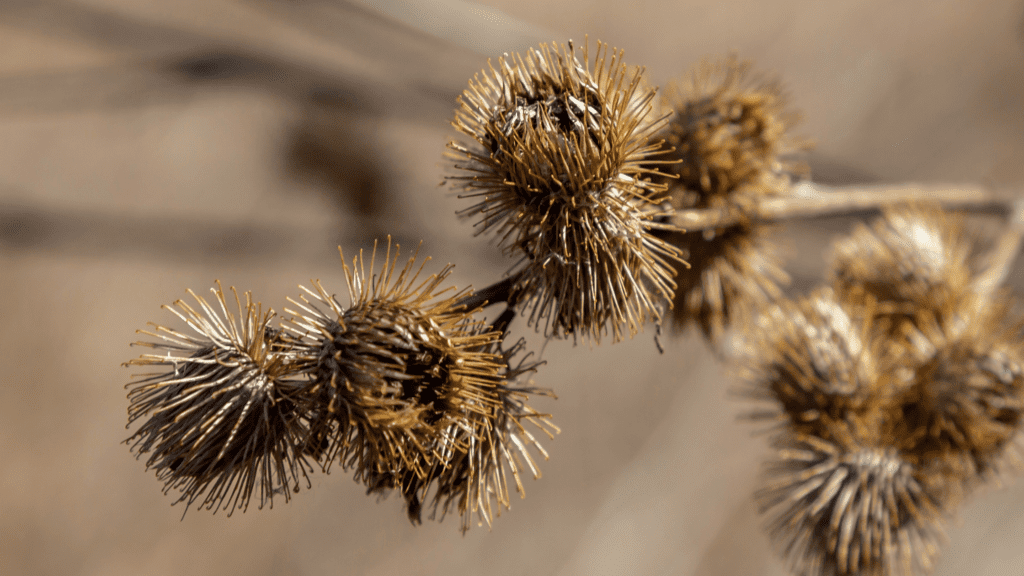
What Are Sticker Weeds?
Invasive plants that have sharp spines, sticker weeds are not only a nuisance but can also damage livestock and pets. To control their spread, some people use strong herbicides to kill them. However, others choose to use natural methods, such as digging them out by hand. These methods are less damaging to your lawn and landscaping.
There are several types of sticker weeds. The most common are grass stickers and burr stickers. Grass stickers are easy to identify because they resemble small blades of grass with pointed ends. The leaves of these plants are green when young and turn brown when they age. Burr stickers are also commonly found in yards. They have large seed pods and light green or yellow-green leaves and stems.
Some types of sticker weeds can be killed by applying a post-emergent herbicide, such as glyphosate. While this method kills the weeds in contact with the herbicide, it is not as effective as using a preventative method. The best herbicides are those that kill the weed before it has a chance to spread.
What Do Sticker Weeds Look Like?
If you want to get rid of stickers in your yard, you should know what they look like and how to kill them. Most of these weeds appear in the fall, and they grow over the winter. When spring arrives, they produce seed pods that are covered in sharp spines. These seeds can cut and stab your feet if you walk barefoot on them. Thankfully, there are natural ways to kill them.
The most common type of sticker weed is the burr sticker. This plant is found growing in lawns and pastures. Its seed pods are large and irregular in shape. They have reddish edges. The leaves of the plant are green or yellowish with brown stems. Depending on the area where you live, you can find it in your yard, pasture, or garden.
To pull out these weeds, they can be pulled out with your hands, but it is important to wear gloves when doing so. Alternatively, you can use garden tools to dig them up. To remove the sticker weeds, you should pull them while the soil is still soft and use a swift, angle-moving motion. This will help remove the entire weed.
1. Yellow Vine Stickers

This annual plant produces yellow flowers and seeds. Yellow vine stickers are typically found in gardens and pastures. They resemble thorny plants because they have sharp points on their stems and leaves.
The stems turn brown with age, and the leaves are green with a reddish tint. In addition, yellow vine stickers produce small seed pods that contain sharp points.
2. Lawn Burweed
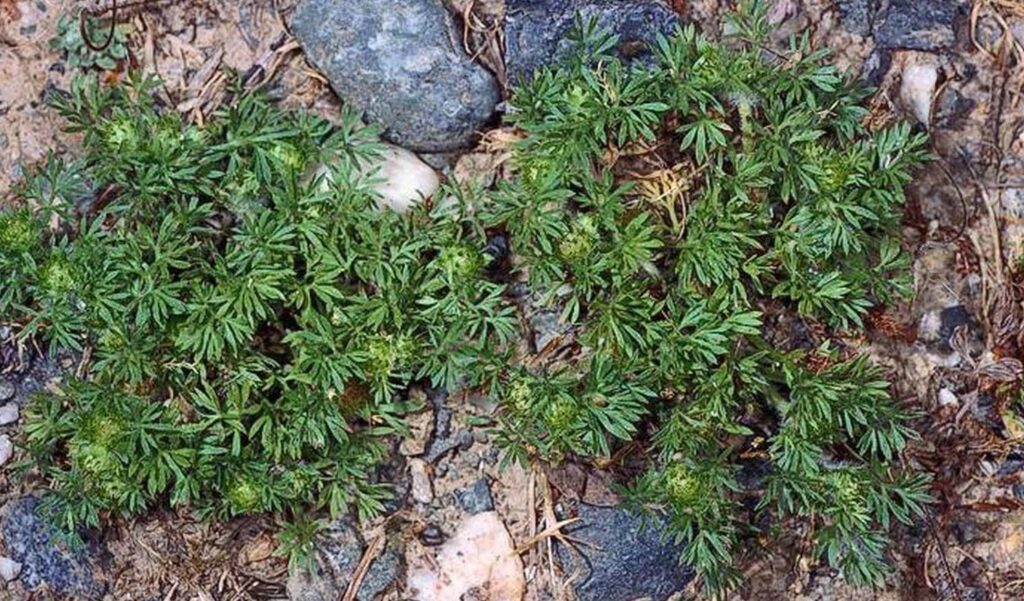
Burs are a common kind of sticker weed that grows in lawns. They have four sharp points on their seed pod. Their leaves are light green and have a reddish tint. They also have a brown stem. These plants are a nuisance and should be treated with care.
Burs can be easily removed by hand, but you must use protective gloves when doing this. A pre-emergent herbicide can also be used. Lawn Burs can grow in many types of grass, but they tend to thrive in moist soil. This can make them very difficult to control.
If you’d like to eliminate Burs from your lawn, you can apply MSMA or other broad spectrum herbicides. These herbicides can be applied in early spring and early summer. This type of herbicide can be quite effective, but you must remember that the herbicide should be applied before the burweed plants emerge.
3. Field Sandburs Sticker
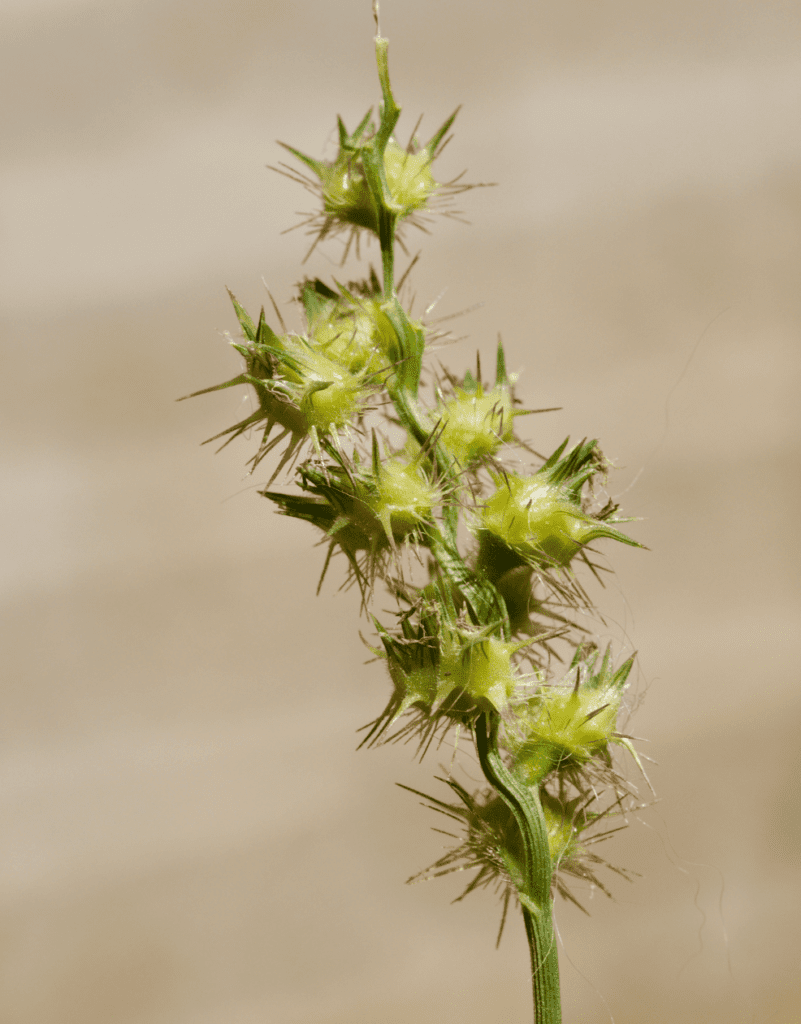
The Field Sandburs Sticker is a weed that produces white hairs and light green leaves. Their seed pods are small and pointy, and they can easily spread in fields without grass. They can also be found growing in lawns. You should always keep an eye out for them.
Sandburs grow in sandy soils. However, they can also grow in clay. It is best to control them during the vegetative stage so that no seeds will be produced. In Texas, there are three common sandbur species: the longspine sandbur and the field sandbur.
The WG Herbicide is a post-emergent weed killer that is recommended for eradication of field sandburs and sticker burs. In addition to applying the weed killer, it is also important to water the lawn after treatment to prevent a re-emergence of the weed. It is important to follow the product label to ensure the best results.
4. Burr Stickers

Burweed, also known as lawn burr, is a species of weeds that grows in moist, open areas. These plants produce seed pods with three to five sharp pins, and the stem will change from green to brown and die off. The seeds of these plants stick to clothing and hair and can be painful.
Burr Sticker Weeds are a nuisance and can be difficult to get rid of. You can use an herbicide to kill the weeds, but it is important to use extra caution when using herbicides in your yard. There are several methods for removing burweeds, including hand-pulling, applying pre-emergent herbicides, and more.
If you do not have the time to hand-pull the stickers, you can use undiluted apple cider or white vinegar to kill the weeds. However, you should remember that vinegar kills surrounding plants, so only use it on the weeds. Then, gather the dead plants and dispose of them.
5. Grass Stickers
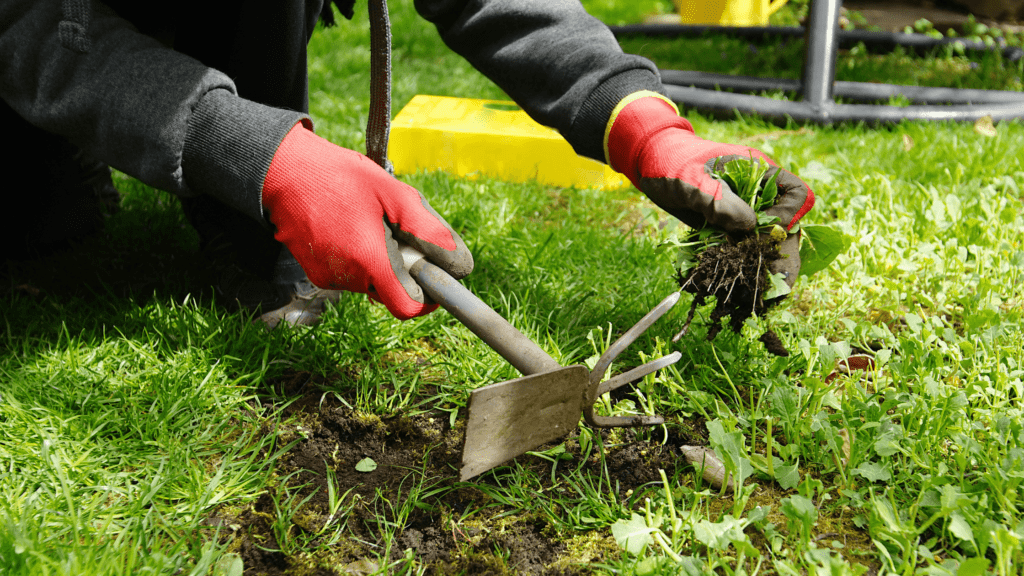
These grass sticker labels are located in turf types that are normally expanded for yards or gardens. With a pointy end that makes them hard to see when growing carefully with each other, they appear like small blades of grass.
When the plant is young, the fallen leaves of this sticker label weed are eco-friendly, yet as they age they turn brownish.
6. Bur Clover
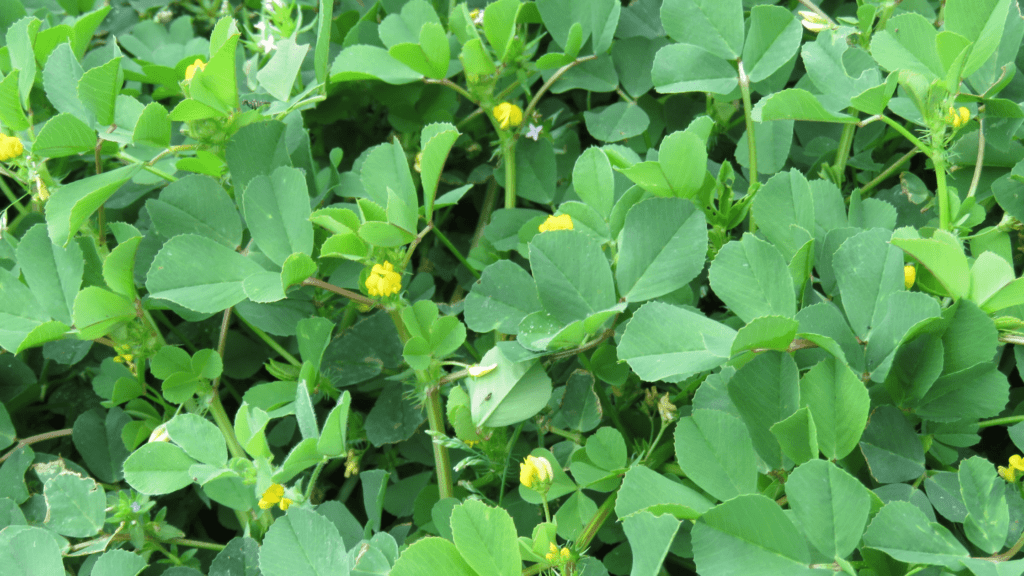
Burclover is a trifoliate weed with leaves that are either smooth or snaggly. It is a common weed in California and is similar to white clover. Its seeds germinate in fall and winter. While it can be controlled using pre-emergent herbicides, it is best to pull a burclover when it is young.
7. Caltrop

Caltrop is a common weed that grows flat on the ground and forms a woody taproot. Its leaves are a light green to yellow color and have a small, pointed end. It is spread by seeds. The best way to kill caltrop is to destroy it before it produces seeds. Herbicides are an effective method for killing caltrop. You can use a pre-emergent herbicide or a post-emergent herbicide to control the weed.
Caltrop is a perennial weed that grows in the southern and eastern United States and Australia. It is a member of the Zygophyllaceae family and Magnoliopsida order. It is not poisonous to humans, but is highly toxic to livestock if grown in large quantities.
You can pull out sticker weeds with your hands, but be sure to use gardening gloves or use a tool to prevent your hands from getting damaged. It is best to pull out the weed when the soil is soft and pull it out using an angle swift motion.
How To Get Rid Of Stickers
There are many ways to get rid of sticker weeds from your yard. First, you can rake your yard. You can also use a bagged mower to collect the burrs. Alternatively, you can use a pre-emergent weed killer. These products can be applied to your lawn in the fall and will kill winter annuals as well. Then, in the spring, you can use the same method to get rid of the remaining winter annuals.
If you’re worried about using herbicides, you can try spraying your lawn with vinegar. It will kill the weed before it emerges, but it will leave your established plants unharmed. Another effective way to kill sticker weeds is to use fertilizer. This is an effective way to kill the weeds and also helps your plants grow.
Moreover, you can also try to prevent the growth of the burs by limiting the access of your pets. Dogs are notorious for spreading this weed, so you may want to consider fencing your yard to protect it from the furry creatures.
Use Herbicides To Control Sticker Weeds
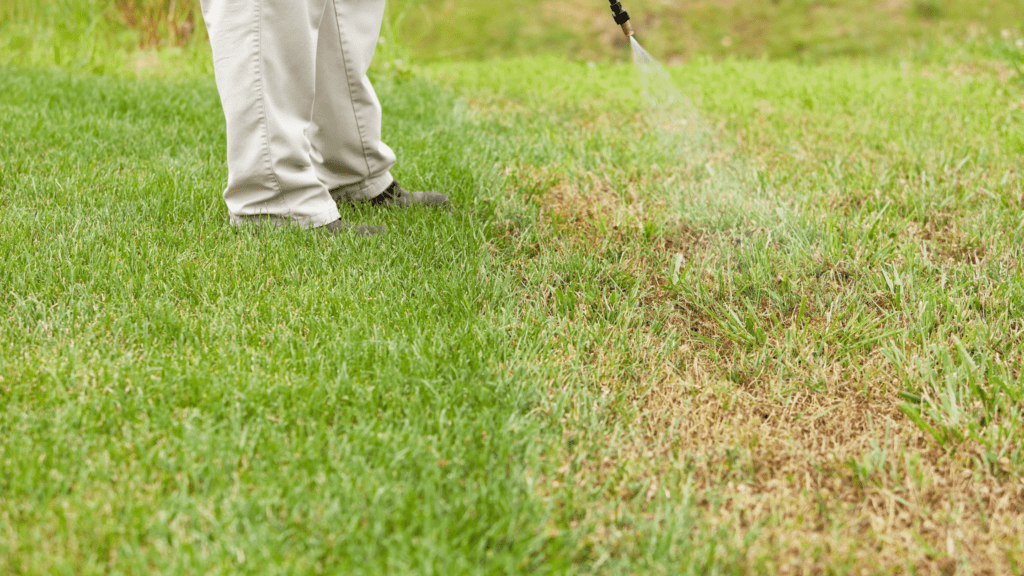
When you need to control stick weeds, you can use herbicides. This method will kill the weeds while leaving the desirable plants alone. These chemicals are commonly used in agriculture and crop production. They come in a variety of different formulations, and each one has its own specific action against specific plants.
For the best results, apply herbicides during the fall or early spring months when the plant’s leaf tissue is in good condition. During application, be sure the air temperature is a comfortable mid-50 degrees, or slightly higher. Cool, cloudy days and cold nights reduce the effectiveness of the herbicide. For best results, choose a herbicide that is safe to use on pastures or rangeland.
Herbicides are usually sold in several different formulations, and depending on the type, they work differently on stick weeds. For example, the herbicide 2,4-D can be formulated as either an ester, salt, or granule. Ester formulations are oil-based and are more effective in cooler weather and on weeds with waxy leaves. The disadvantage of ester formulations is that they can be carried by the air and drift to non-target areas.
- Post Emergent Herbicides
If you want to kill stick weeds, you may want to try using Post Emergent Herbicides for Stick Weeds. These products are concentrated formulas that you can apply directly from the container. They usually come with a spray wand and will have a noticeable effect within a day or two. It is important to follow the directions on the label, though, because improper application can damage your yard and cause toxic side effects for you and your family.
These products come in two forms: granular and liquid. The former will stick to the weeds and require spraying, while the latter will work by affecting the roots of the weeds. However, this method is not very effective on irregularly shaped areas. In addition, you must carefully measure the amount of post-emergent herbicide you need, because incorrect application may result in burning the plants or ineffective control.
Most Post Emergent Herbicides are best applied once spring has sprung. This makes it easier to reach the roots of the weeds, making them easier to kill. You may have to apply several applications to control all weeds.
The most reliable post-emergent herbicide is MSMA (Monosodium methanearsonate).
- Pre-Emergent Herbicides
If you want to keep your yard looking nice in the spring, pre-emergent herbicides are an excellent solution. These chemicals will prevent the growth of weeds, while also preventing them from returning. Pre-emergent herbicides are available at any time of the year and can be applied as early as January or as late as mid-April. Depending on your climate, you may need to adjust the application date depending on the time of year. In warm regions, weeds may start to sprout in January and February, while in cool regions, it may take until May.
The main advantage of pre-emergent herbicides is that they prevent weeds from germinating, meaning that you won’t need to apply as much every year. However, you should always make sure to apply the product correctly to achieve the best results. Applying pre-emergent herbicides to the wrong area at the wrong time can lead to disastrous results.
The best instance would certainly be a Roundup herbicide because of its adaptability in doing away with the different sorts of sticker labels in yards.
Mechanical Control
Mechanical Control of sticker weeds can be accomplished through various methods. One method involves using vinegar to kill the weeds. Vinegar contains acidic compounds that are toxic to plants. If you spray vinegar directly on the weeds, they will die within a few days. A second method involves using herbicides. Herbicides that contain glyphosate are effective at killing sticker weeds.
Mechanical Control of sticker weeds is an effective way to eliminate this invasive weed. Mechanical control is also time consuming because it requires manual labor and can take days to complete. However, mechanical control of sticker weeds is more effective than hand pulling and requires little skill. The most important thing to remember when pulling out these weeds is to wear gardening gloves and to hold them by the center. Pulling out the weeds by the center is best because this helps the roots come out quickly.
Sticker weeds come in many types. A common form of this weed is the grass sticker. Its bright green, lobed leaves can pierce skin and stick to clothing. They also have hairy stems that can make them difficult to pull out by hand. Mechanical Control of sticker weeds involves a combination of manual picking and mechanical spraying.
Natural Weed Killers
Burweed, or sticker weed, is a weed that can cause problems for your lawn. It germinates in the fall and grows throughout the winter, producing seed pods in the spring. Burweed seed pods are covered with sharp spines that can prick your barefooted feet. Fortunately, there are natural treatments that can help you get rid of this nuisance weed.
White vinegar is a common alternative to chemical weed killers. It can be diluted and sprayed on weeds to control them without harming healthy plants. When spraying white vinegar, make sure to get as close as possible to the weed. This way, you’ll avoid the grass and other plants nearby.
Alcohol, a common herbicide, is also an effective weed killer. This mixture contains disodium methanearsonate (DMSA), or monosodium acid methanearsonate (MSMA). You can also buy a concentrated form of either MSMA or DSMA that contains one ounce of MSMA per gallon of water. Although these solutions can be a bit more effective, they may not be environmentally friendly or safe for children and pets.
Pulling Weeds By Hand
Pulling sticker weeds by hand can be a beneficial method of controlling these weeds. While mechanical control is beneficial to a certain extent, manual removal is more labor-intensive and requires a high level of commitment. This method is best suited for small areas where weeds haven’t spread too much. To properly pull out these weeds, be sure to wear gardening gloves and grasp the weeds by their center. Pulling them out by center will quickly loosen their roots and pull them out.
When pulling prickly plants, use protective gardening gloves to avoid stabbing yourself or causing injury. It is also important to dig six inches away from the main stem to loosen the soil around the root ball. After that, use a weed puller to tease out the entire plant.
Another option is to apply pre-emergent herbicides to kill off the weeds before they have a chance to grow. These products contain active ingredients like Benefin and oryzalin, which kill off the weed seedlings before they have a chance to grow into a full-grown plant. These products are effective against a number of different types of weeds.
Pick The Stickers Out By Hand
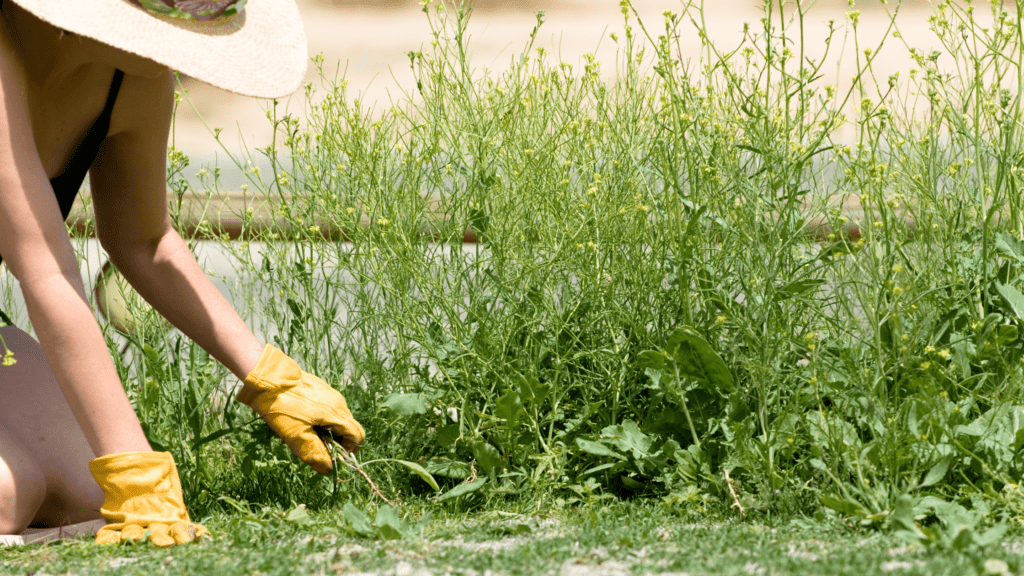
When you design stickers, you should pay close attention to detail. The colors, textures, and quality of the sticker’s print should match the design. This is particularly important for vinyl stickers, which have extra backing paper around the outside. Often, you can print your contact information, website, and brand name on the backing paper.
Stickers made of glossy photo paper require special printing settings. Make sure to set the printer’s paper to the highest quality setting so that more ink is laid down. This ensures the quality of the stickers. Also, make sure to load the sticker paper with the right side up. Then, select the right printing settings.
When it comes to the ink used in sticker production, the color of your ink cartridge will affect how the sticker prints. You can either go with a color cartridge with high-end brand names, or use compatible cartridges. Compatible cartridges are designed to provide high-quality printing at a fraction of the price of brand-name cartridges.
Use Gardening Equipment
In order to remove sticker weeds from your lawn, you can use gardening equipment. Mowing, bagging, and spreading a pre-emergent are all good options to control these weeds. Using garden equipment will also help you get rid of the seeds and burrs, which the weeds produce.
Using a rake can help you collect the stickers. It is important to pull the weeds quickly, as they are close to the stickers. Hand-pulling weeds can be exhausting, so you might want to use gardening equipment to get rid of them quickly. You can also use lawnmowers and aerating machines.
Another solution to get rid of sticker weeds is to use herbicides. The best herbicides work by killing the weeds before they have a chance to spread. However, you must remember that this method may not be suitable for every type of weed.
Cutting The Grass

Sticker weed is a common problem in lawns. It grows in open areas with little or no soil cover and prefers moist soil. It can be quite painful, so you should be extra careful when cutting it. It is best to use a lawn mower that has a sharp blade, or you could end up with a burweed. These weeds also produce seed pods that can pierce your skin. Moreover, they can be very hard to remove once attached to your skin.
To kill sticker weeds, you can use a pre-emergent herbicide. Applying a pre-emergent herbicide on your lawn will prevent the seeds from germinating. However, you should avoid spreading weed killer containing sticker burrs. The weed killers will help kill the stickers but won’t be 100% effective because heavy rains may wash away the herbicides. For this reason, most people use a combination of pre-emergent herbicides and post-emergence products to get the best results.
Another natural option for killing sticker weeds is to uproot them. You can do this by hand or by using an herbicide spreader. If you use a pre-emergent herbicide, you should follow the instructions carefully. However, this method may take a long time. You should also follow the weather conditions in your area before you apply it. For instance, pendimethalin cannot be applied to a lawn until the ground has thawed after winter. Also, pendimethalin is only effective at 55 degrees Fahrenheit.
Use Organic Methods
If you’re interested in growing your own sticker weed, there are some things you need to know. The various species of this plant produce prickly fruit that can be extremely annoying for gardeners and homeowners. They are also known as burweed or grass. They usually blend in with your grasses and don’t produce any visible flowers.
One way to kill sticker weed without using chemicals is to use vinegar. Vinegar contains acids that are toxic to plants, and if you spray it directly on the weed, it will die within a few days. You can dilute this solution with water to make it less harmful to your plants.
Another way to kill sticker weed is to use neem oil. This is a great organic herbicide for this type of weed. It works by disrupting the hormone system in plants, and will not harm your edible plants. Other effective organic herbicides are acetic acid or citric acid. Mulch is also an excellent way to prevent sticker weed from growing through your plants and can also be used to retain moisture in the soil. Mulch can be homemade from grass clippings, or purchased commercially at your local garden center.
White Vinegar
One of the best ways to control sticker weeds is to use a natural alternative to chemical herbicides. White vinegar is an excellent alternative herbicide, and it works by bleaching out the weeds and damaging the grass surrounding them. However, you need to use caution when using it. It’s best to spray the vinegar on the weeds themselves and not on nearby areas. In addition, you should dilute the mixture to make it less potent.
To start, you need to identify the stickers. You’ll need to identify them by their name and the shape of their leaves. While many people confuse them with burweed, the two plants are related. Burr weed has a burr-like plant, while sticker weed has clover-like leaves. Stickers are most common in temperate and tropical regions. They are also common in states with dry weather. Sticker weeds are a nuisance not only to homeowners, but also to pets and the surrounding environment. The spikes on the seeds of these weeds make them very difficult to remove once they have attached to clothing and other items.
Fortunately, there are many effective methods of killing stickers without harming the grass in your lawn. One of the most popular methods involves using vinegar. This simple solution has been shown to be extremely effective in killing stickers, but it’s important to remember that it’s not 100% effective. Heavy rains and other environmental factors can wash away the herbicide, so it’s best to use a combination of post-emergence products to ensure that you get the best results.
Salt To The Roots
To effectively kill weeds, make a salt-water solution. The ratio of salt to water depends on the type of soil. A mixture of 1:2 salt to water is safe for garden beds, while a 2:1 or 3:1 solution is safer for areas with sensitive soil. Mix the solution and apply it to the foliage of weeds. It is important to avoid applying the solution to the roots of the weeds, as this could damage surrounding plants. Alternatively, you can apply the solution to the weeds with a spray bottle and then flush the weeds with water.
If you want a more permanent solution for killing weeds, you can use a solution of rock or table salt. However, you should keep in mind that the concentration of salt must be greater than that of regular table salt. To get the best results, you should use a salt solution on weeds with underground rhizomes. This way, the weeds will stay embedded in the soil and will not sprout again until later in the season. Keep in mind that if you have a heavy rain, the salt may wash away from the soil, and you will need to repeat the process.
Flame Weeding

Flame weeding is an environmentally friendly method of weed control. Instead of destroying crops, it helps the soil by adding nutrients. It also releases carbon back into the soil, giving the plants additional fuel to grow. The process is also an effective way to prevent weeds from developing resistance to chemicals.
Before using flame weeding, a weedbed must be prepared. This includes applying nutrients according to the soil test recommendations, thoroughly incorporating fertilizer, and smoothing the surface. This will help deflect the heat emitted by the flame weeder. It is important to remember that flame weeding can also encourage weed growth if it is not done properly.
Flame weeding is most effective when weeds are young and small. It is not very effective on grasses, which have their growing points below the ground. They also protect their roots by a sheath. Perennial weeds, however, will need multiple applications every two weeks to completely kill. Flame weeding is also more effective when used in conjunction with cultivation.
The type of plants affected by flaming will influence how much heat is transferred to them. Young plants are more sensitive to flaming than older plants, which means they are less tolerant to the treatment. The amount of heat a plant can tolerate depends on its growth stage, its number of leaves, the gas pressure, and the exposure time.
From Invading Your Garden
If you’re interested in preventing pests in your garden, there are a few basic things you can do. The first step is to know what kind of pests you have. You can spot them by their behavior or by their food preferences. Common garden pests include deer, rabbits, groundhogs, and domesticated pets.
What Fertilizer Kills Stickers?
Fortunately, there is a chemical herbicide that will kill stickers. This chemical is called MSMA and relies on the poisonous metal arsenic to kill these weeds. It can be safely used in low doses in your yard, but be aware that it is illegal or restricted in many countries. It is best applied in the spring or summer when stickers are at their lushest. If you’re concerned about stickers growing in your yard, you can contact a professional to apply this chemical.
To effectively control stickers, you must identify the plants that are producing them. Some common ones are burweed and sandbur. Burweed is native to South America, but has been introduced to the United States, Australia, and parts of Europe. The seeds from these plants become stickers when they mature. It is an unsightly, irritating weed, and can cause severe pain if stepped on.
Another option is a pre-emergent herbicide. However, you should consider the weather when applying this herbicide to avoid damaging your lawn. It should be applied once a year when temperatures are between 55 and 60 degrees Fahrenheit. This herbicide will kill the weeds before they even emerge, but it will not kill mature plants. For this reason, you should only use it once a year.
Conclusion
Sticker weeds are a type of weed that is common in gardens and pastures. Their seed pods are similar to those of grass, but they are much larger and have rounded corners at one end. They have green leaves when they are young, and brown ones as they age. You can also find spiney stickers in your garden, which have a reddish tint and sharp spines on their stems.
There are many different methods to control sticker weeds. One of the most effective is to dig them up. Stickers will reproduce themselves quickly, so it’s important to get rid of them as quickly as possible. The best way to do this is to pick up as many as you can every week and to discard them properly. If you have a large lawn, you can also gather them up in a burlap bag or piece of old carpet, and tie it up with a furry blanket.
If you have pets, it’s especially important to protect your yard from sticker weeds. These weeds can be harmful to pets, and the presence of stickers in your yard can be stressful for them. A healthy lawn and regular watering will help prevent the infestation of sticker weeds. Herbicides and vinegar are also effective ways to remove them after they have taken hold.
